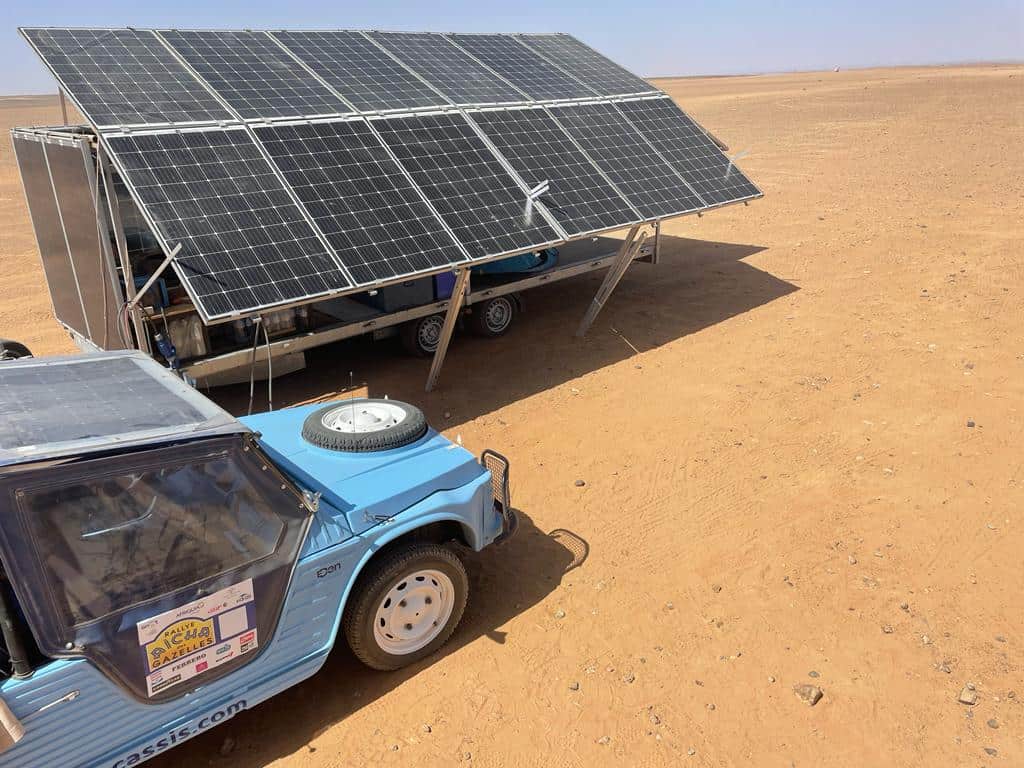How to install a solar farm in 2024?
[ad_1]
Nowadays, renewable energy production has become a priority for many countries, including France. According to the International Energy Agency (IEA), in 2019 alone, France produced around 25.5% of its electricity from renewable sources, including 10% from solar energy.
Solar farms and energy storage systems are effective ways to maximize renewable energy production. However, their integration into existing electrical systems can be complex. We will present to you a 6-step guide to maximizing renewable energy production through solar farm integration and energy storage systems.
Evaluate energy needs
Before beginning the integration of solar farms and energy storage systems, it is important toassess the energy needs of your business or home.
In France, the Average household electricity consumption is around 4,500 kWh per yearwhich can vary depending on several factors, such as household size, use of appliances and type of heating.
It is therefore essential to know how much energy you need to be able to size your solar and energy storage system.
Study technical constraints
When integrating solar farms and energy storage systems, it is essential to fully understand the associated technical constraints. Here are the main technical constraints to take into account in France:
- Comply with electrical safety standards
Solar and energy storage installations must comply with current electrical standards, including NF C15-100 standard for electrical installations in buildings. This standard defines the rules to follow to guarantee the safety of people and property.
- Comply with network connection standards
Network connection standards are set by the Energy Regulatory Commission (CRE) in France. They define the connection methods, THE requirements for the quality of electricity producedas well as connection procedures to follow.
- Check compatibility with the existing electrical network
The technical characteristics of your installation must be compatible with those of the electrical network, particularly in terms of voltage and frequency. If your installation is not compatible with the network, this may cause electrical disturbances and damage your equipment.
- Provide protection against surges and electrical disturbances
Power surges and disruptions can damage your solar and energy storage equipment. To protect your installation, it is important to‘install protective devices against surges and electrical disturbancessuch as surge protectors and anti-harmonic filters.
Choosing the Right Location
Choosing the location of the solar farm and energy storage system is also crucial. It is important to consider factors such as orientation And the inclination of the roof for the solar panels, as well as the availability of space for the installation of the energy storage system.
For example, if your roof faces south, this can maximize solar energy production in France, where sunshine is generally higher in the south of the country.
Size the system
Once the energy needs have been assessed and the technical constraints have been studied, it is time to size the system. This involves determining the size of the solar farm and energy storage system to meet your energy needs.
- There recommended size for a photovoltaic solar installation in France is approximately 3 kW for a 100 m² house with average consumption.
- The capacity of energy storage batteries should be determined based on how much energy you want to store for later use.
- Energy storage batteries can have a capacity ranging from a few kilowatt hours to several megawatt hoursdepending on your needs.
Choose the components
The choice of solar farm and energy storage system components is also crucial. It is important to choose high-quality solar panels and reliable energy storage batteries to ensure efficient and sustainable renewable energy production.
In France, the most commonly used solar panels are monocrystalline and polycrystalline panelswhich have an effectiveness of energy conversion of up to 20%.
The most commonly used energy storage batteries are lithium-ion batteries, which provide good storage efficiency and long life.
Implement and maintain the system
Finally, it’s time to implement the system and maintain it. It is important to check the performance of the system regularly to ensure that it is working properly. Regular maintenance also helps extend the life of the solar farm and energy storage system.
It is recommended to have your solar installation serviced by a professional every 2 to 4 years to ensure optimal operation.
For maximize your renewable energy production in France thanks to a solar farm and an energy storage system, it is important to take into account technical constraints, choose components carefully, correctly size your installation and maintain it regularly. These measures will allow you to reduce your environmental impact and your energy costs in the long term.
Have you ever considered installing a solar farm and energy storage system at your home? At the house of Tesla-Magwe stay on the lookout for the latest information on renewable energies to keep you informed.
[ad_2]
Source link
